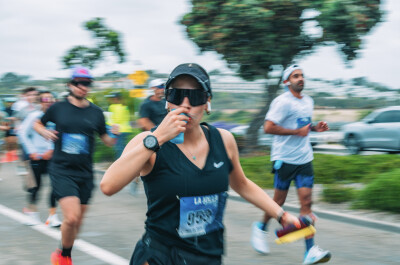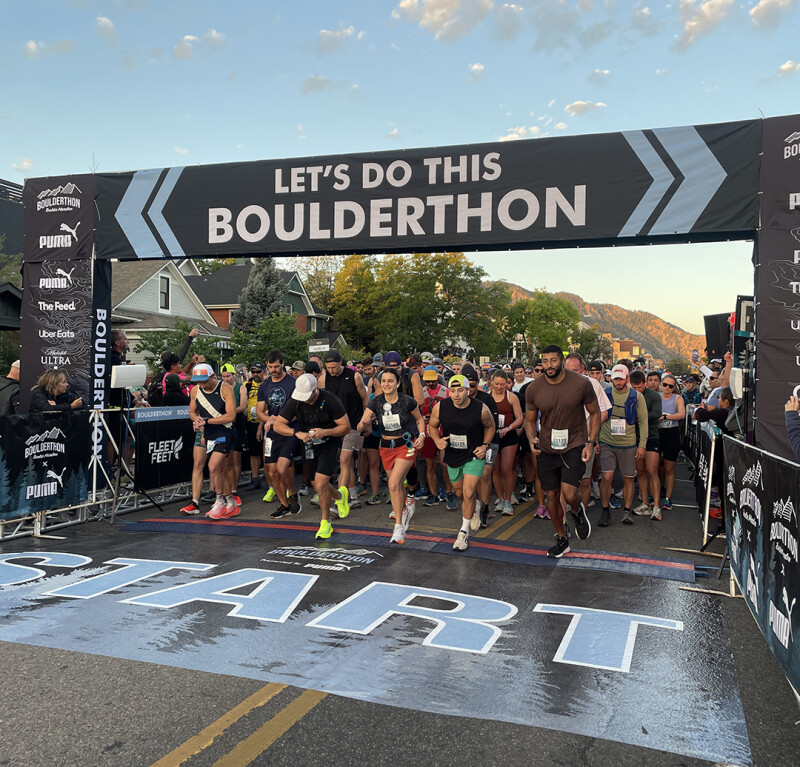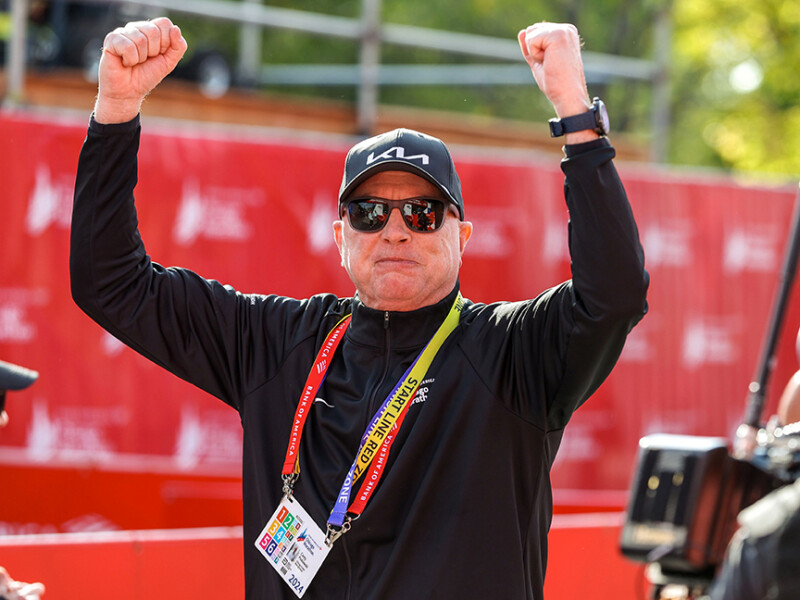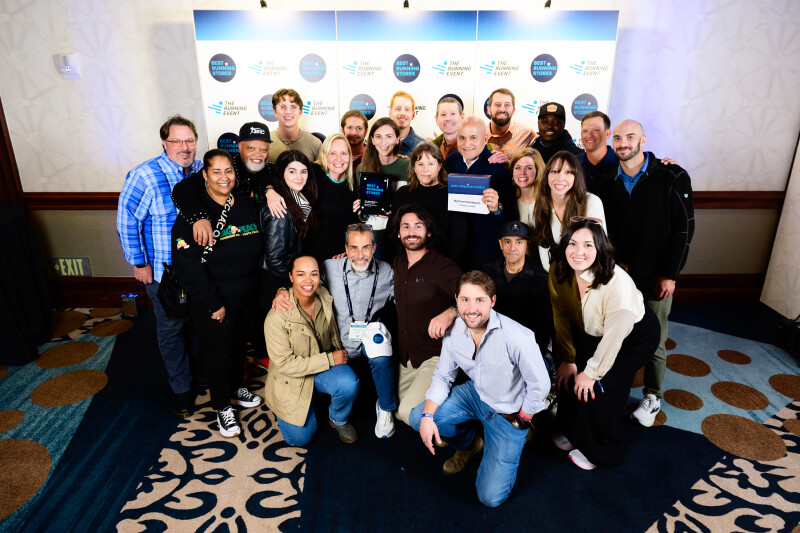Imagine the scene: It’s race day and volunteers are scrambling to fill paper cups as racers come in, desperately trying not to bump into the table and knock all the cups down. Runners are bottlenecked at crowded aid stations and a sea of paper cups litter the ground, leaving everyone to run through the waste.
This is a common occurrence at races around the world and race directors have struggled to figure out how to manage these issues. There may be an answer, and there is data to support it.
Recently, a study commissioned by hydration brand HydraPak and led by crowd scientist Marcel Altenburg, whose expertise in mass movement dynamics guides some of the world’s largest endurance events, found that races that adopt refillable, self-serve hydration systems not only reduce waste and labor significantly, but also keep runners moving without delays.
Using Start Right, a simulation tool trusted by the World Marathon Majors, Altenburg mapped real-time movement with 99.9 percent accuracy. Altenburg’s research analyzed aid station efficiency and racer flow at the 2024 and 2025 La Jolla Half Marathons. These races both implemented a refillable racing model using HydraPak’s Speedcups and Speedfill Pitchers, large-scale WaterMonster tanks outfitted with UltraSpout dispensers and runner’s own refillable hydration vessels.
His conclusion: The refillable model is not only viable — it is superior.
• 4.2 spigots per 100 runners per minute ensures smooth, stress-free flow with a 150 percent safety margin.
• A single spigot can reduce volunteer needs by two people, cutting staffing in half at busy stations.
• The modeled system at La Jolla could handle up to 250 runners per minute, though it ran far below that threshold, keeping everything smooth and showing the potential for a larger capacity.
• Self-serve hydration eliminates the number one pain point at aid stations: long lines for a cup of water.
“If you can estimate your total racers, you can easily plan cupless aid stations — and now we have the numbers to prove it,” states Altenburg. “Through sustainable racing, you solve 90 percent of aid station problems, from staffing to runners waiting for a cup of water. If you have enough Ultraspouts, racers will never have to wait again and your race can grow without the need for more volunteers.”
Since 2021, endurance events have seen steadily rising participant numbers with fewer volunteers offering their time to support events, despite the crucial role they serve in race operations. To alleviate the impact of this growth, self-serve models are proving to be a scalable solution and allow races to utilize volunteers more efficiently.
Major events, like the New York Marathon or Chicago Marathon, rely on armies of volunteers to unpack, pour and distribute tens of thousands of single-use cups per station. With a standard cupless racing setup with refill stations, like that at the La Jolla Half Marathon, volunteers can be reassigned to other important tasks. Despite clear environmental and operational benefits, the most significant barrier to eliminating single-use cups remains tradition and a resistance to change.
“I understand the hesitation other race directors have, but this model made our event even easier to manage,” says Burt Calame, race director of the La Jolla Half Marathon. “We had a simple setup, needed fewer volunteers, saw less waste and had an overall better experience for runners. On race day, the aid station flow was nothing short of excellent. Our race won’t be going back to the traditional model.”
Altenburg’s study offers race directors a data-backed blueprint for streamlining aid stations while drastically cutting waste With this new data in hand, race directors can confidently move away from single-use systems and toward a more efficient and sustainable future.






